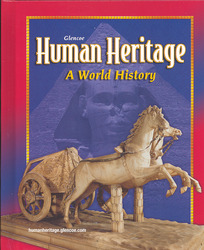Human Heritage: A World HistoryChapter 9:
BeginningsWeb Activity Lesson Plans“Geographic Features of Greece”Introduction
Students have read about the development of civilizations in early Greece. In this exercise, students will use map reading skills to understand how physical geography influenced the development of the Minoan civilization. Lesson Description
Students will use information from National Geographic's MapMachine to understand how geography influenced the Minoans. Students will examine different types of maps, including satellite and elevation maps, to predict how geography affected the ancient Greeks. Instruction Objectives
- Students will use maps to predict how bodies of water and mountains influence communities and people's livelihoods.
- Students will use their knowledge to write a description about Greece's physical features and evaluate how these features affect movement.
Student Web Activity Answers
- Turkey is located east of Greece.
- The Mediterranean Sea surrounds the Greek peninsula.
- The colors on the map represent different elevations found throughout Greece.
- Greece is very mountainous. The central region of the peninsula, however, is more flat.
- The Minoan civilization developed on an island. Students should conclude that the people had to adapt to the physical geography by learning skills that were important to survive, including shipbuilding and trading.
- Students should explain that physical features, such as mountains and bodies of water, probably prevented the interaction among communities. Travel would be difficult, and the communities would be isolated and independent.
- Articles should describe the difficulty of traveling among the islands and through the mountainous regions of Greece.
 | 




